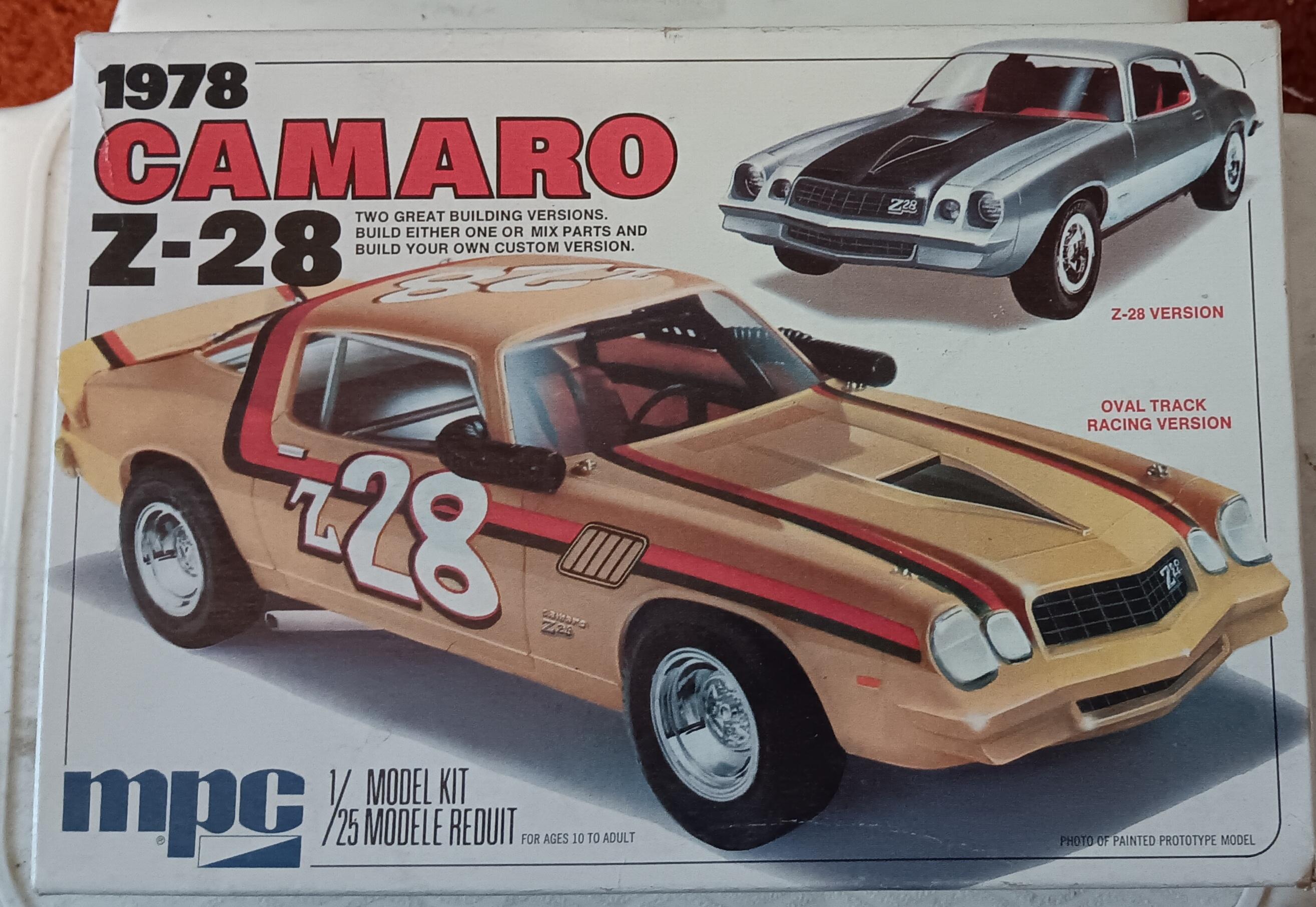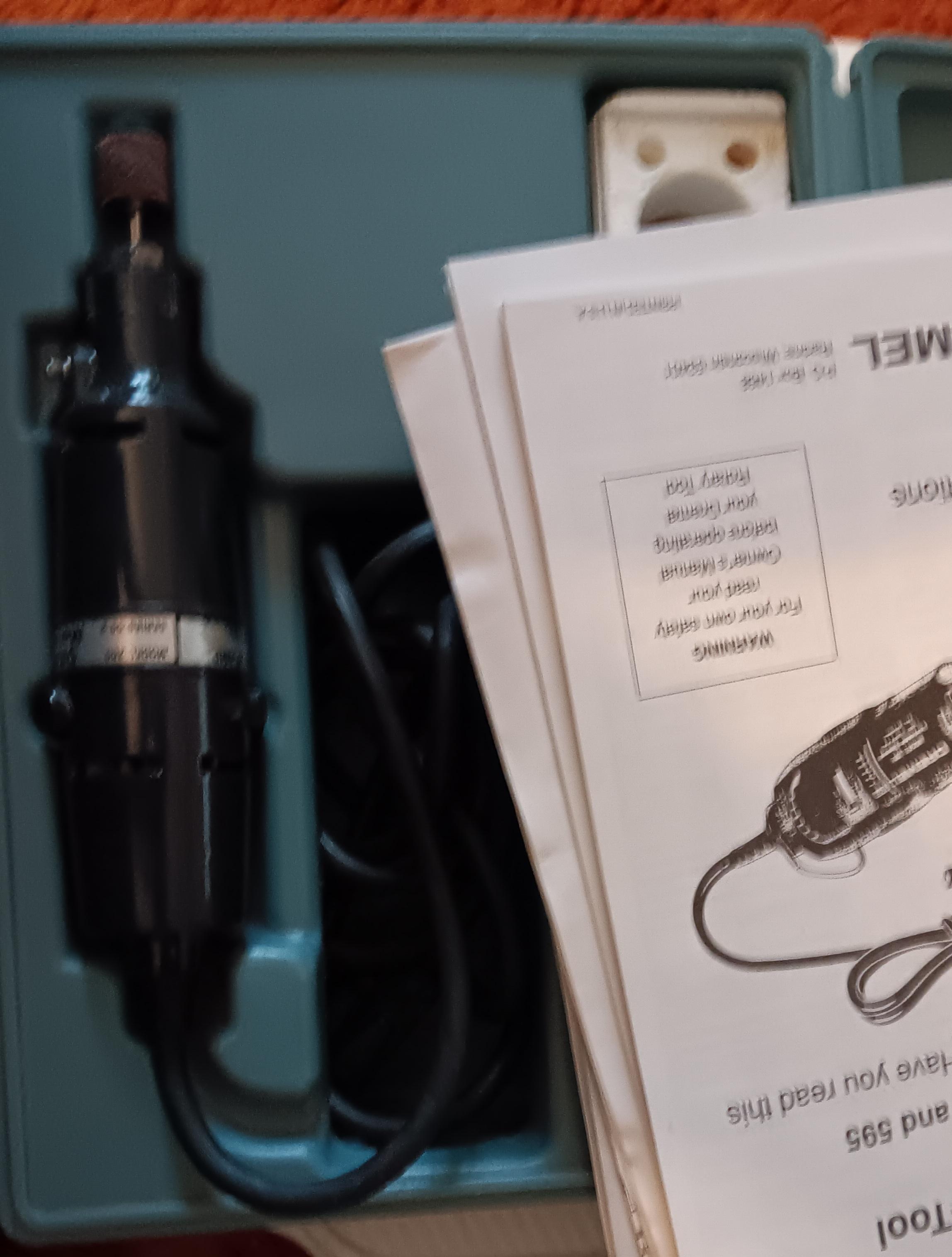
Mark
Members-
Posts
7,344 -
Joined
-
Last visited
Content Type
Profiles
Forums
Events
Gallery
Everything posted by Mark
-
The Jo-Han Maverick kits did not include shock tower detail. The cast piece was apparently offered to correct that.
-
I might be misinformed, but my understanding is that the Golden Commandos versions were commissioned by members of that group, so they could sell them (and autograph them) at various gatherings. They did allow Moebius to sell X number of each version through their regular channels however. The Melrose Missile was a Model King deal and was thus easier to get. Not sure about the California Flash version.
-
Is There A Baja Bug Kit with a Roof?
Mark replied to oldcarfan's topic in Model Building Questions and Answers
The AMT Meyers Manx kit includes a top like that. Baja Bug is a whole different thing; that term generally refers to a Beetle with truncated front and rear ends, exposed engine, and vestigal fenders. -
Went to a local flea market "garage sale" (first Sunday of the month; they're trying to stretch it to twice a month but it's not flying). Camaro kit is complete, parts bag sealed. Got it for the average retail price of a current car kit. Not bad for a 47 year old kit. The Dremel is a single speed model which I don't think they make anymore. I had an eye open for one, as I have a Dremel separate speed control unit. The Dremel tools with built-in speed control operate at a minimum of 5,000 rpm. With the separate control, this one can be reduced to 1 rpm. The tag said "Sixties" but the paperwork with it is all dated 1995. I didn't think these were made as recently as then. Only one bit (a sanding drum) but it does have all three chucks as well as the wrench. Works great. Not bad for eight bucks.
- 39,042 replies
-
- 5
-

-
- johan
- glue bombs
-
(and 1 more)
Tagged with:
-
Revell 1953 - 1954 Chevrolet sedan
Mark replied to jdcar32's topic in Model Building Questions and Answers
The Revell versions are still relevant for enough people because they are the only kits representing those body styles in those years. If you can live with a '51 delivery instead of '53/'54, Jimmy Flintstone might still have that available. But, like some other kits that aren't up to scratch, these still sell because a lot of people built them in the past, and want to take another swing at them later. -
Revell 1953 - 1954 Chevrolet sedan
Mark replied to jdcar32's topic in Model Building Questions and Answers
Another couple of issues with the Revell '53/'54: -Panel lines are shallow and on the shaky side. Early issue instructions mention that the doors and trunk lid (rear door on the delivery) can be cut open and made operable. The hinges are still there, molded as part of the door panels. The doors droop when opened, just like the '55-'57 kits. On one of the bodies (don't remember which) the hood just sits on top of the fender, not in a recessed area like pretty much every other kit with a separate hood. Another hood thing: the hood slopes down towards the front when you view the car from the side. That gives an optical illusion, like the fender is rising towards the front. Lots of work needed to get it all right. -
Revell 1953 - 1954 Chevrolet sedan
Mark replied to jdcar32's topic in Model Building Questions and Answers
The Monogram hardtop is 1/24 scale and can be built completely stock. The Revell kits are 1/25 scale, and are not stock. Both have a '54 front bumper, incorrect '55 style inner front fenders, custom headlight and taillight areas on the bodies, and non-stock drive train and rolling stock. Rear wheel openings are larger than stock, and the bodies lack windshield wiper detail and stock emblems. -
Advice needed for speedster build.........
Mark replied to JollySipper's topic in Model Building Questions and Answers
Atlantis needs to get that Revell parts pack Buick engine into a kit box, and soon. -
Moebius - Planning and Tires
Mark replied to IBuildOneFortyEight's topic in Model Building Questions and Answers
'66 underbody is pretty much the same, as the '66/'67 was just a holding action while the '68 was developed in conjunction with the new for '67 Camaro. Really, one of the companies doing one of these early Novas ought to have developed a full-on pro touring version, with wider rear tubs and a fabricated front subframe with Mustang II or a fabricated tubular A-arm setup. And, an LS swap to bring it right up to the present day. -
I get scam e-mails at work all of the time. Most are from "employees" asking how to change their direct deposits over to another (their) bank account. I only make changes when I get signed forms in person, so the e-mails get dumped right away. No reply = not giving them any clue of how to fine tune their scam. I have gotten a few from a guy who passed a couple of years ago. We also got "check washed" a couple of times last year. Someone got a check we used to pay a vendor or utility, changed the payee name, and deposited it in their account. We got refunded on the first one but I don't know if the bank recovered the money. Second one, they got greedy and raised the check to an amount that didn't match anything we had outstanding at the time. I caught that one and stopped it, and I believe the person responsible was found. I'm thinking these incidents start either at a utility or bank where someone intercepts the check and passes it along to someone else, with that person rewriting it.
-
Moebius - Planning and Tires
Mark replied to IBuildOneFortyEight's topic in Model Building Questions and Answers
I'd get the kit in hand before buying any wheel/tire setup. It's based on a stock Nova. It might be "cheated" a bit to allow for the tires already included, but if it isn't stock in the area of wheel/tire fitment, it's pretty close to stock. The stock Novas came with 13" or 14" wheels depending on which engine it came with, and the tires weren't wide at all. -
1966 or 1967 Plymouth Sedan model ???
Mark replied to gtx6970's topic in Model Building Questions and Answers
A couple of scale inches will make a difference. See "Revell 1991 Mustang LX" -
1966 or 1967 Plymouth Sedan model ???
Mark replied to gtx6970's topic in Model Building Questions and Answers
If you attempt your own conversion, first thing to do is research the windshield. See if the glass is different for the sedan/wagon versus the hardtop. If they are different, the sedan/wagon will be a couple of inches taller. They aren't always different. GM usually is different, Ford often is, Chrysler is hit and miss. The '62 B-bodies for example use the same windshield glass for hardtops and sedans, meaning the sedan roof isn't taller on those cars. The same glass for both would make the conversion somewhat easier. -
But, if you are restoring a vintage guitar that was originally finished with lacquer, it will probably be more desirable if restored with materials as similar to original as possible. An unrestored original in good condition would be more desirable. But if you are starting with an instrument that has already been messed with, then restoration is the way to go unless it belonged to someone famous, in which case you'd leave it the way it was when that person had it and played it regardless of how far it strayed from original.
-
Looks like Monogram to me. AMT used wire axles in most of theirs (and didn't put dropped axles in too many Trophy Series kits). Revell had the multiple piece fiddly everything back in the day, I don't recall anything like that from MPC, and Jo-Han wasn't even in that neighborhood. Only Monogram used stubs like that for the wheels. Only question, what is it for. I'd guess '29 Ford roadster pickup Early Iron Series, due to the tan color. Most of those kits were molded in yellow, with tan interior parts. Didn't matter what color the chrome tree was, because it went in the vacuum chamber anyway.
-
That's probably just a variation on automotive lacquer. A guy I used to work with has restored a couple of guitars. He had them painted by a friend of his who operated a collision shop and painted cars. To use lacquer paints on styrene plastic, the plastic needs to be primed and sealed after all needed bodywork has been completed. As long as the primer and sealer are compatible with the lacquer, there shouldn't be any issues. The lacquer might be thick straight out of the can, but it has to be thinned for spray application anyway. Again, compatible products used together, no problems.
-
I'd cough up for the Accurate Miniatures kit. From what I have heard and read from various sources, it's unlikely that it will ever be produced again. I can't see anyone else doing a styrene kit, maybe someone will do a 3D print one though.
-
Polycarbonate paint question
Mark replied to customline's topic in Model Building Questions and Answers
It's a lot hotter than the Tamiya sprays used on styrene, as it is sprayed on the clear R/C body on the inside and has to bond to that plastic without primer. You could probably get away with it over white lacquer primer or paint. Since it's a pearl, you will be clearcoating it anyway. -
I never had the AMT Cougar FC kit, but I'd bet that it uses the same interior "tin" piece as the Mach Won, Longnose Mustang, AND (first) Funny Hugger '69 Camaro. Yes, the Camaro and Mustangs used the same main interior piece (not sure offhand about the scoop). '69 Cougar kit trivia: if you have the Countdown series issue, take a good look at the rear wheel openings on the custom version build photographed for the box art. Whoever built that one probably got a test shot that included the body that hadn't been restored to stock yet.
-
Looks like a nice straight line that would lend itself to a small steel ruler. For scribing, you can go with a panel scriber or X-Acto #11 blade "backwards"; that is, using the blade in reverse as opposed to using the cutting edge.
-
That is the correct decal sheet for that Cougar II. The silver panel on the sheet is intended for use on the roof, as shown in the box art illustration.
- 39,042 replies
-
- johan
- glue bombs
-
(and 1 more)
Tagged with:
-
I paint them with a brush, after the exterior trim is foiled. I first carefully paint the edges and inside of the A-pillars with a very small brush, let dry, then use a larger brush for the bigger areas.


